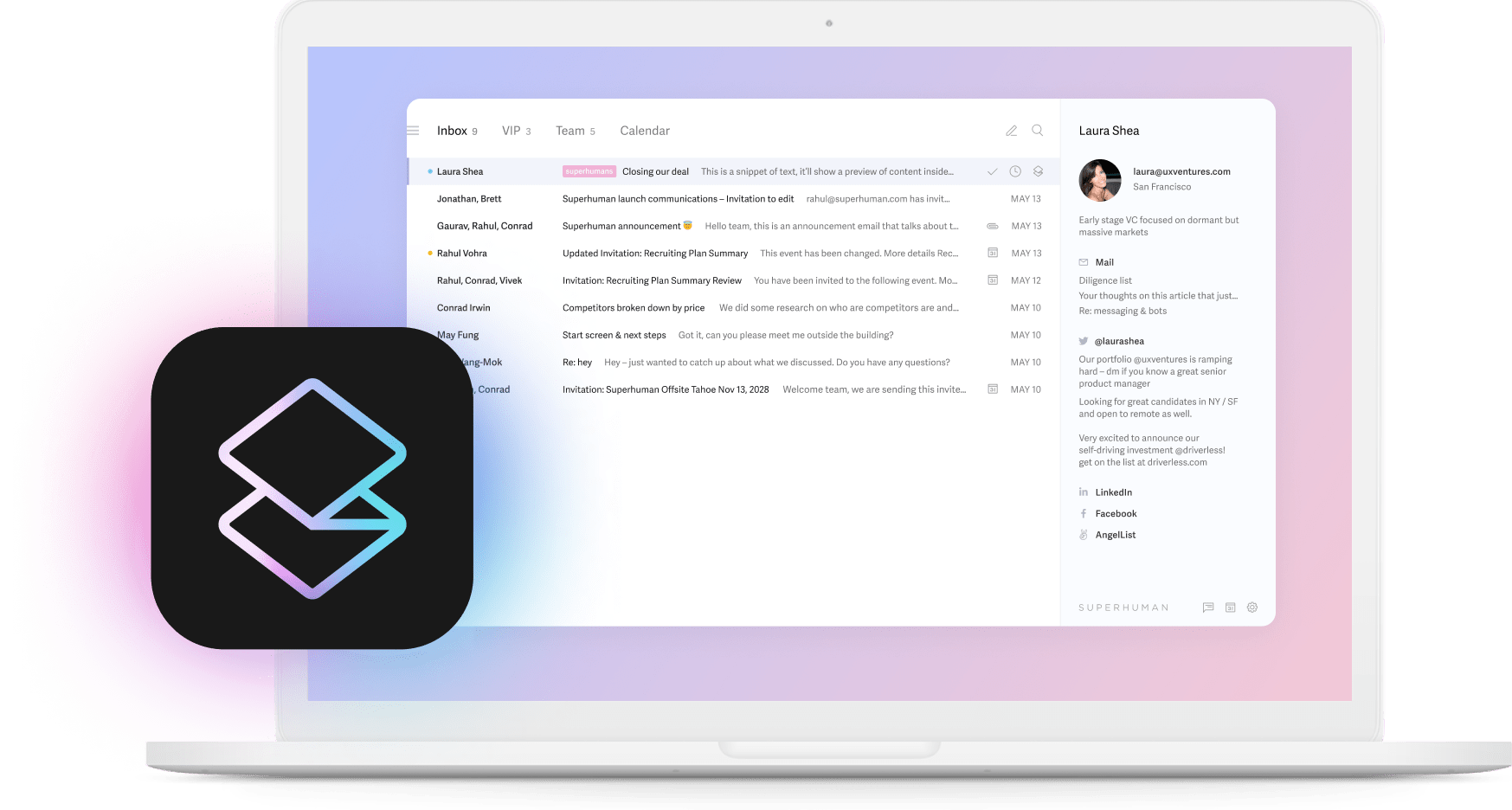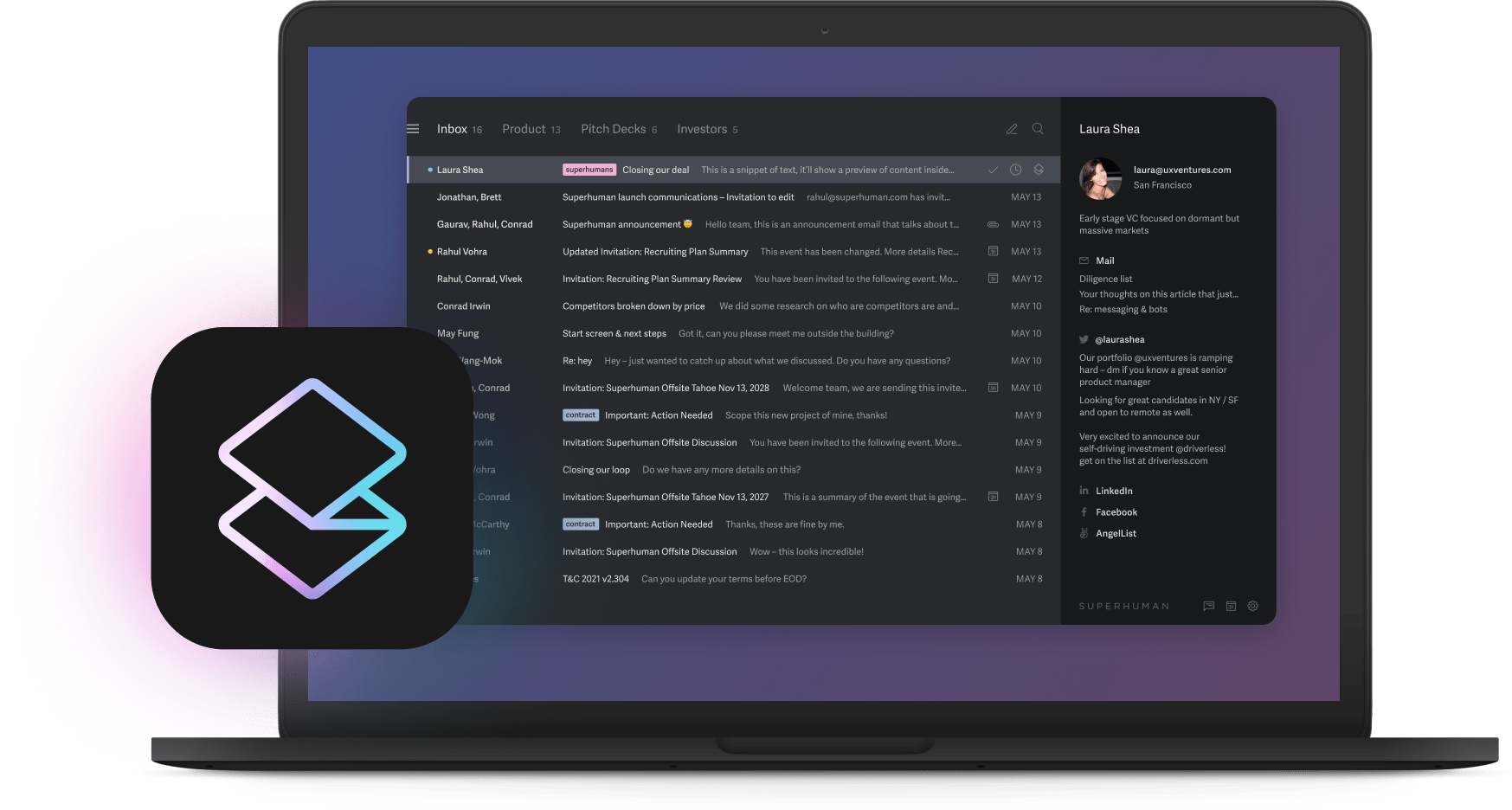
Companies spend millions on fancy office spaces, then go remote and wonder why everything falls apart. The coffee machine conversations disappear. Quick hallway decisions turn into endless email chains. People feel disconnected.
But some teams make remote team communication look effortless. They respond faster than office teams ever did. They collaborate better. They seem to enjoy working together more, not less.
What's their secret? We've been watching these high-performing remote teams for months. The difference isn't the tools they use. Everyone has Slack and Zoom. The difference is the systems they've built around those tools.
Here are the 11 strategies that separate the remote teams that thrive from the ones that barely survive. You'll recognize some of these ideas, but the way the best teams implement them might surprise you.
1. Create a central inbox for team communication
Think about your inbox right now. How many unread emails do you have? If you're like most people, it's somewhere between overwhelming and terrifying.
Here's the problem. Your inbox doesn't distinguish between your CEO asking for a quick update and a newsletter you signed up for three years ago. Everything gets the same treatment. The important stuff drowns in the noise.
Split Inbox changes this completely. It sorts your messages automatically. Emails from colleagues pop up first. Messages from your project management tools get their own section. Everything else waits at the bottom.
Companies like Deel take this further with custom splits. Their hiring emails never mix with their product discussions. When someone's reviewing candidates, they're only seeing candidate emails. No context switching.
Want to start simple? Try these moves. Give your team shared labels for different projects. Make Friday "Inbox Zero" day where everyone clears out together. Set up filters that catch the important stuff before it gets buried. Superhuman AI learns how you write to specific people and drafts replies that sound like you wrote them. Teams using this respond 12 hours faster and handle twice as many messages.
Quick wins:
- Set up inbox categories for different work types
- Create shared labels your whole team uses
- Schedule weekly inbox clearing sessions
2. Use project management software for always-visible work-in-progress
"Hey, what's the status on that thing we talked about last week?" If this question sounds familiar, your team has a visibility problem.
When work lives in people's heads and private email threads, everyone becomes a bottleneck. People spend more time asking for updates than working. Projects stall because nobody knows who's supposed to do what next.
Good project management tools fix this, but not in the way you think. The magic isn't in the tool itself. It's in making everything visible to everyone all the time. When you can see who owns what and when things are due, the status update emails stop.
Pick tools that talk to your email. Asana, Trello, and Linear can all send updates straight to your organized inbox. Pro tip: put task IDs in your email subjects. This connects every conversation to the work it's about.
Best part? When everything's visible, people stop treating you like Google for project information.
3. Streamline real-time chat with crystal-clear channel norms
Chat can save your team or destroy it. The difference is whether you have rules that everyone follows.
Most teams treat Slack like a free-for-all. Channels multiply like rabbits. Messages pile up faster than anyone can read them. People start ignoring everything because they can't tell what's important.
Here's what works. Name your channels so their purpose is obvious. #marketing-campaigns tells you more than #general-discussion. Set up @mention rules so people aren't getting pinged for everything. Use emoji reactions for quick responses instead of typing "thanks" fifty times a day.
Most importantly, let people mute channels by default. Give everyone control over their attention. When something's truly urgent, pick up the phone.
Teams with clear chat rules cut their message volume by 30% while getting better responses. Why? Because people know which messages matter.
4. Replace marathon meetings with focused video huddles
Long meetings are productivity killers. Remote teams often make this worse by thinking longer meetings mean better communication. Wrong.
Try 25-minute sessions instead of hour-long marathons. Send the agenda beforehand. Make cameras optional so people don't get video fatigue. The time constraint forces better decisions faster.
Calendar Overview lets you check schedules without leaving your inbox. Create Event schedules meetings directly from email conversations. Share Availability lets people click time slots that work for them instead of playing calendar ping-pong.
Record important conversations with quick summaries for people who couldn't attend. Tools like Zoom, Google Meet, and Around make this automatic. Your teammates across time zones can catch up without watching hour-long recordings.
Better meetings aren't about having more of them. They're about making the ones you have count.
5. Automate status tracking with activity reports and live dashboards
Manual status updates are busywork disguised as communication. You type the same information into three different places. By the time you finish, the information's already outdated.
Smart teams automate this completely. GitHub Pulse shows code commits. Jira dashboards track completed tasks. Slack bots summarize team activity. These systems create reports without anyone typing status updates.
Route these summaries to dedicated inbox sections so leaders stay informed without drowning in notifications. Auto Summarize turns long email conversations into quick context within seconds.
Companies like Rilla track their entire sales pipeline through email instead of traditional CRMs. The automation replaces manual reporting completely.
When everyone can see progress clearly, something interesting happens. People work harder because their contributions are visible. Team morale goes up because accomplishments don't disappear into private updates.
6. Record key discussions for on-demand playback
Important decisions happen in conversations that half your team misses. Without proper capture, you end up explaining the same things over and over. People make uninformed choices because they weren't there when it mattered.
Recording tools like Loom, Claap, and Zoom solve this, but only if you use them right. The secret is pairing recordings with short summaries so people can find relevant parts without watching everything.
This works especially well for global teams. Instead of scheduling meetings at terrible times for someone, record the discussion and let people catch up asynchronously.
Build a searchable library of these conversations. Future decisions get faster because you have context and precedent instead of starting from scratch every time.
Think of it as building institutional memory that doesn't walk out the door when people leave.
7. Build a virtual water cooler to nurture culture and camaraderie
Remote work can feel lonely. People miss the random conversations that build relationships and trust. You can't rely on serendipitous encounters anymore. Culture needs intention.
Here's what we've seen work. Coffee roulette through tools like Donut pairs random teammates for virtual coffee. #wins channels let people celebrate each other's successes. Meme threads that let personalities show through. Friday quizzes that mix fun with team bonding.
Leadership participation makes or breaks these initiatives. When executives join the fun, it signals that relationships matter, not just deliverables.
The goal isn't recreating an office. It's creating something better. Connections that happen because people want them to, not because they're trapped in the same building.
8. Publish transparent communication SLAs and workflows
Without clear expectations, people guess how fast they should respond. Some stress about replying immediately to everything. Others take days without realizing it's causing problems.
Set response time expectations that make sense for your team. Two hours for urgent Slack messages. 24 hours for regular emails. Same day for customer issues. Read Statuses show when emails get opened so you know when to follow up.
Companies like Hebbia use Recent Opens to track sales engagement. They know when leads are reading their emails and time their follow-ups perfectly.
Put these agreements somewhere everyone can find them. Add them to email signatures. Create workflow diagrams for common handoffs so people know who handles what next.
The goal isn't creating bureaucracy. It's eliminating the anxiety that comes from not knowing what's expected.
9. Respect global time zones with async-first habits and send-later tools
Global teams face an impossible problem. Someone's always asleep when decisions need to happen. Most teams try to solve this with more meetings. Bad idea.
Better approach? Design workflows that work without perfect timing. Smart Send delivers emails when recipients are most likely to read them. No more 3 AM notifications.
Teams like Deel use Remind Me features to hide emails during off hours and surface them during work time. This prevents the "always on" feeling while keeping things responsive.
Create "follow-the-sun" handoff documents. Current status, next steps, blockers. Standard format every time. Work continues smoothly across time zones without requiring overlap meetings.
The best global teams feel like they're working together even when they're never awake at the same time.
10. Layer visuals and GIFs to cut ambiguity and boost speed
Text creates confusion. You write three paragraphs explaining something. Someone reads it and gets it completely wrong. You spend another hour clarifying what you meant.
Visual communication cuts through this mess instantly. Instead of describing a process, show a screenshot with annotations. Instead of explaining a bug, record a quick screen capture. Complex ideas become clear when people can see what you mean.
Tools like Markup, Snagit, and Loom GIF capture make this as easy as typing. The time you spend creating visuals comes back tenfold in reduced confusion and follow-up questions.
This works especially well for technical discussions, design feedback, and process documentation. When you can show instead of tell, misunderstandings disappear.
11. Create continuous feedback loops and actually close them
Most teams collect feedback and then ignore it. This destroys trust faster than not asking for feedback at all.
Use tools like CultureAmp or Google Forms to gather honest input about what's working and what isn't. Here's the crucial part that most teams miss: publicly acknowledge what you heard and share specific action plans.
Snippets help create consistent responses that sound personal while ensuring thorough follow-up. Companies like Hebbia share winning messages across their sales team through Team Snippets. New hires quickly learn proven approaches while keeping their authentic voice.
People feel safe sharing honest feedback when they see their input driving real changes. Skip this step and your feedback becomes worthless.
What separates the winners from everyone else
Remote team communication requires intentional design, consistent execution, and continuous refinement. These 11 strategies provide the framework for building systems that scale with growing teams while maintaining the personal connections that drive exceptional performance.
The ones that thrive don't just use better tools. They build better systems around those tools. Whether you're managing sales pipelines like Rilla's team handling 100+ deals monthly, or coordinating global initiatives like Deel's distributed workforce, communication systems determine success.
Remote work succeeds when digital communication feels as natural as grabbing coffee with a colleague. With these strategies, any team can build the communication excellence that turns distributed work from a challenge into a competitive advantage.





